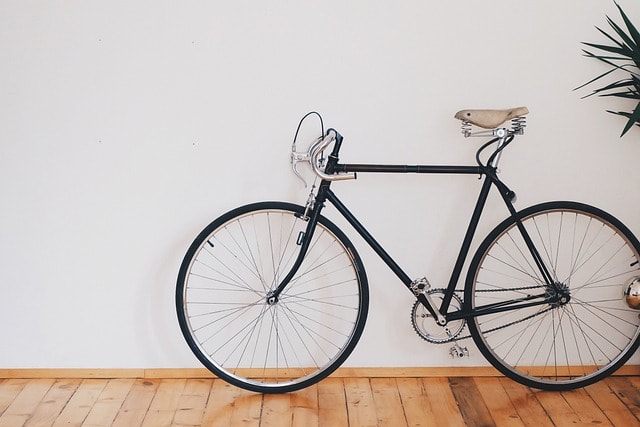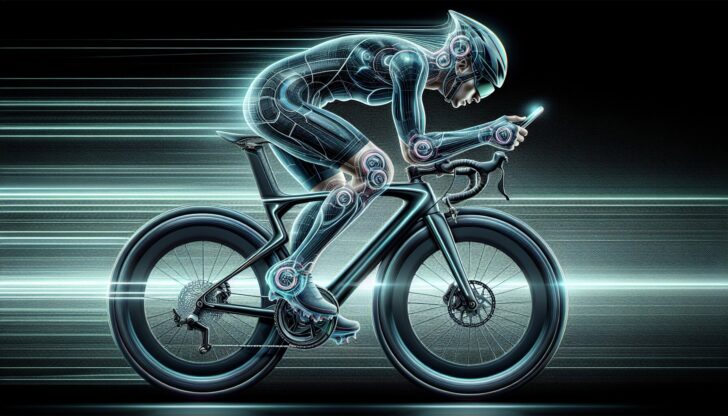Searching for the best bikes parts? This guide breaks down key components like frames, wheels, and pedals. Discover how to choose the right parts and find the best places to buy them.
Table of Contents
Key Takeaways
Understanding and selecting the right bike parts, such as frames, wheels, and pedal systems, is critical for optimizing riding efficiency and comfort. Each component significantly affects the bike’s overall performance and must be chosen based on the rider’s specific needs and terrain.
Regular maintenance, including scheduled servicing, cleaning, and lubrication, is essential to ensure the durability and peak performance of your bike. Addressing common repairs and issues promptly can prevent major problems and enhance riding safety.
Purchasing quality bike parts from reliable sources such as local bike shops, online marketplaces, or manufacturer websites is vital. Each option offers unique benefits like personalized service, wide product selection, and guaranteed authenticity. Additionally, investing in safety accessories, comfort enhancements, and performance upgrades can greatly enrich your cycling experience.
Understanding Bike Parts

A bike is a complex machine with numerous components working in harmony to deliver a smooth ride. At the heart of this machine is the frame, which provides structure and significantly affects the bike’s weight, strength, and performance.
The wheels, with their hubs, spokes, and rims, are crucial for movement and stability. Pedal systems, whether clipless or flat, play a vital role in riding efficiency and comfort. Explore these fundamental bike parts further to comprehend how they affect your cycling experience.
Frame
The frame is often considered the backbone of the bike, connecting all other components and determining ride characteristics. Bike frames are available in an array of materials, each boasting distinct advantages:
Aluminum frames are lightweight and resistant to corrosion but can be stiff, impacting comfort on long rides.
Carbon fiber frames are incredibly light and stiff, ideal for racing, but they come with a higher price tag and can be prone to impact damage.
Steel frames, known for their durability and smooth ride, are heavier and susceptible to rust.
Titanium frames offer a smooth and comfortable ride, perfect for long distances, though they are expensive and difficult to weld.
Bamboo frames provide natural shock absorption but are fragile. Every material provides unique riding attributes; select one that aligns with your specific requirements and cycling style.
Wheels

Wheels are fundamental bike parts that directly impact your ride’s quality and efficiency. A wheelset consists of the front and rear wheels, each composed of hubs, spokes, and rims. Rims, often made from aluminum or carbon fiber, vary in weight and performance. Aluminum rims are common and durable, while carbon fiber rims are lighter and more prevalent in high-end wheelsets.
Spokes, connecting the hub to the rim, are usually made of steel or carbon and can be either straight-pull or J-bend. The choice of materials and design in your wheelset can affect everything from acceleration to handling, hence, it’s crucial to choose wheels that suit your cycling style and terrain.
Pedal Systems
Pedal systems are critical for efficient power transfer and riding comfort. There are two main types: clipless and flat pedals. Clipless pedals allow cyclists to attach their shoes securely to the pedals, enhancing pedaling efficiency and power transfer. These systems require compatible cycling shoes and offer a significant boost in performance, especially for long-distance and competitive riders.
Conversely, flat pedals are intended for effortless use and frequently incorporate pins for enhanced grip. They are popular in mountain biking due to their simplicity and ease of use. Each pedal system has its advantages, so choose based on your riding preferences and needs.
Choosing the Right Components
Choosing suitable bike components is pivotal to customizing your bike to your specific cycling style and requirements. While bikes within a given category and price range generally have similar types of components, the choice of gears, brakes, and suspension systems can significantly affect your ride.
Guaranteeing the compatibility and peak performance of these designed parts is vital for a gratifying cycling experience.
Gears and Drivetrains
Gears and drivetrains play a significant role in defining a bike’s performance and adaptability. The number of gears can vary, affecting the range and ease of pedaling. Single-speed bikes are low maintenance and ideal for flat terrains, while multi-speed bikes offer better adaptability for varied terrains.
For instance, a 21-speed configuration typically includes three front chainrings and seven rear cassette cogs, providing a wide range of gears. Choosing the right drivetrain setup can make your rides more efficient and enjoyable, depending on the terrain you plan to conquer.
Brakes
Braking systems are indispensable for ensuring safety and control. Disc brakes generally offer superior braking power in all conditions compared to rim brakes. They are particularly effective in wet conditions, making them a popular choice for off-road and all-weather riders. Rim brakes, on the other hand, are lighter and easier to maintain.
Hydraulic brakes, known for their strong stopping power and better modulation, are often preferred for high-performance bikes. Understanding the benefits of each braking system can help you choose the best option for your riding style and conditions.
Suspension Systems
Suspension systems significantly contribute to riding comfort, particularly on rugged terrains. Full-suspension bikes, which feature both front and rear suspension, offer a smoother ride and can handle rugged trails, though they generally cost more. They are suitable for aggressive trail riding.
Hardtail bikes, with only front suspension, are typically less expensive and still absorb bumps effectively. They are often preferred by cross-country riders and those on a budget. The choice between full-suspension and hardtail depends on the type of terrain you plan to ride on and your budget.
Durability and Maintenance Tips
Regular bike maintenance is critical for guaranteeing durability and peak performance. Regular servicing can prevent wear and tear on bike parts and ensure a safe riding experience. Proper cleaning and lubrication protect components from excessive wear, rust, and corrosion.
Consider the following practical maintenance tips for keeping your bike in prime condition.
Regular Maintenance Schedule
Maintaining a consistent service schedule is crucial for ensuring your bike’s optimal condition. Before every ride, check for loose parts by lifting and dropping the front wheel to listen for rattling sounds. Inflate your tires at least once a week to ensure proper pressure, which significantly impacts ride quality and durability.
Inspect brake pads, cables, and wheels every 10-20 hours of riding. Aim to service your bike every 25 hours of riding time or every 6-12 months, depending on your riding frequency and conditions.
Cleaning and Lubrication
Frequent cleaning and lubrication of your bike’s moving parts are essential for seamless operation. Here are some steps to follow:
After every long ride, clean the grime off the chain and derailleurs.
Lubricate the chain.
Use bike-specific degreasers instead of harsh chemicals like kerosene or turpentine to clean gummy parts.
Lubricate brake and derailleur cables occasionally with dry lube to ensure effective operation. Keeping your bike clean and well-lubricated will enhance its durability and performance.
Common Repairs
Being prepared for common bike repairs can save you time and frustration. Here are some tips to keep in mind:
Mechanical disc brakes need manual adjusting as the pads wear
Hydraulic disc brakes should have their lines bled once per season to keep the fluid fresh
Address issues like squeaky brakes and difficult shifting promptly to prevent more significant problems.
Carrying a multi-tool, tire levers, and spare inner tubes in a small saddle bag can prepare you for roadside repairs.
Best Places to Purchase Bike Parts
Procuring quality bike parts is crucial for the upkeep and enhancement of your bike. There are several options for purchasing bike parts, each with its own advantages:
Local bike shops: These provide personalized service and expert advice.
Online marketplaces: These offer a wider range of products and potential discounts.
Manufacturer websites: These guarantee product authenticity and official warranties.
Consider your needs and preferences when deciding the best place to purchase your bike parts.
Delve deeper into these pay options for a better understanding.
Local Bike Shops
Local bike shops are invaluable for personalized service and expert advice. You can test ride bikes and equipment, ensuring you make an informed purchase. These shops support the local economy and help foster a strong cycling community.
Personalized recommendations from seasoned staff can assist you in finding the ideal bike parts for your specific requirements.
Online Marketplaces
Online marketplaces offer a vast selection of products and often better prices than physical stores. Sites like Universal Cycles and Cycle Club Sports provide fast shipping and competitive pricing. However, the lack of personalized service and the risk of counterfeit products are potential drawbacks.
Consider these aspects while deciding on your purchase source for bike parts.
Manufacturer Websites
Purchasing directly from manufacturer websites offers several benefits, including:
Genuine parts with official warranties
Exclusive products and early access to new releases
Detailed product information
Tailored customer support
These advantages make buying from manufacturer websites a great option, especially when considering the regular price of products.
Purchasing from manufacturers such as WTB ensures genuineness and dependability.
Accessorizing Your Ride

Outfitting your bike with accessories can greatly enrich your cycling experience. Essential accessories include safety gear, comfort enhancements, and performance upgrades. Investing in quality accessories can make your rides safer, more comfortable, and more enjoyable.
Safety Accessories
Safety accessories are paramount for protecting yourself on the road. Some essential safety accessories include:
Helmets with advanced technologies like MIPS and Wavecel, which offer high protection levels
Bright front and rear lights, which are crucial for visibility, especially at night
Reflective materials on jackets or backpacks, which can further increase your visibility to other road users.
Having appropriate safety gear can substantially improve your riding safety.
Comfort Enhancements
Comfort enhancements can transform your riding experience. Cycling-specific clothing, like padded shorts, provides enhanced comfort on longer rides by minimizing soreness and chafing. Professional bike fitting services offered by local bike shops ensure your bike is safe and comfortable.
Investment in comfort accessories can mitigate discomfort and elevate your overall cycling experience.
Performance Upgrades
Performance upgrades can elevate your cycling to the next level. Some high-quality performance upgrades to consider include:
Bike computers: These track speed, distance, heart rate, and provide GPS navigation.
Power meters: These are valuable for monitoring your cycling performance and improving training efficiency.
Aerodynamic accessories: These reduce drag, enhancing your bike’s speed.
Such upgrades can assist you in reaching your cycling objectives and enhancing your performance.
Answering Your Questions
Cyclists often have questions about bike part compatibility and when to replace components. Understanding how new components interact with existing ones, especially drivetrains and braking systems, is crucial. Signs that bike parts need replacement include wear and tear, difficulty in shifting, or reduced braking performance.
Tackling these queries can aid you in effective bike maintenance and guarantee a seamless ride.
Check out The 8 Best Upgrades For Your Bike (MTB, Road, Gravel).
Summary
In summary, understanding and investing in quality bike parts is essential for enhancing your riding experience. From choosing the right frame, wheels, and pedal systems to selecting gears, brakes, and suspension systems tailored to your needs, each component plays a pivotal role in performance and comfort. Regular maintenance, including a proper schedule for cleaning and lubrication, helps ensure the durability and longevity of your bike. Knowing where to purchase your bike parts—whether from local bike shops, online marketplaces, or manufacturer websites—can also make a big difference in the quality and authenticity of the products you receive. Lastly, accessorizing your ride with safety gear, comfort enhancements, and performance upgrades can elevate your cycling experience to new heights. So, gear up, maintain your bike well, and enjoy every ride to the fullest.
Frequently Asked Questions
How do I know if a new bike part is compatible with my existing components?
To ensure compatibility with your existing components, consult an expert at a local bike shop or refer to the manufacturer’s specifications. Always seek professional advice to avoid any issues with compatibility.
How often should I service my bike?
You should service your bike every 25 hours of riding time or every 6-12 months, depending on your usage and conditions. Regular servicing ensures optimal performance and safety for your bike.
What are the signs that my bike parts need to be replaced?
If you notice visible wear and tear, have difficulty shifting gears, experience reduced braking performance, or hear unusual noises during rides, it’s a sign that your bike parts may need replacement. Keep an eye out for these signs to ensure your bike’s optimal performance.
Where is the best place to buy bike parts?
The best place to buy bike parts depends on your needs. Local bike shops offer personalized service and expert advice, online marketplaces provide a wider range of products and potential discounts, and manufacturer websites guarantee product authenticity and official warranties.
What safety accessories are essential for cycling?
Make sure to equip yourself with a properly fitted helmet, bright front and rear lights, and reflective materials on your clothing or gear to ensure maximum visibility and safety while cycling.









